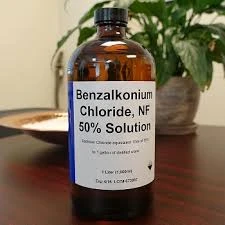Application of Cationic Polyacrylamide Flocculants in Water Treatment Processes
The Role and Importance of Cationic Polyacrylamide Flocculant
Cationic polyacrylamide flocculant (CPAM) is a synthetic polymer widely used in various industries for its effective flocculation properties. This water-soluble polymer has a positive charge, which allows it to interact with negatively charged particles in suspension, making it an essential agent in processes such as water treatment, sludge dewatering, and paper manufacturing. This article will delve into the chemistry, applications, and benefits of cationic polyacrylamide flocculant, highlighting its significance in promoting environmental sustainability and efficiency in industrial processes.
Chemistry of Cationic Polyacrylamide
Cationic polyacrylamide is synthesized through the polymerization of acrylamide, with the introduction of cationic monomers such as dimethyl aminoethyl methacrylate (DMAEMA), diallyl dimethylammonium chloride (DADMAC), or trimethylammonium ethyl acrylate. This process results in a polymer with a positive charge, which contributes to its flocculating capabilities. The degree of cationicity can be adjusted during the synthesis process, allowing for the customization of the flocculant to meet specific industrial requirements.
The positive charges on the CPAM molecules enable them to bridge negatively charged particles, promoting the aggregation of particulates, which leads to the formation of larger flocs. These flocs can then settle more rapidly in a liquid medium, making the clarification process more efficient.
Applications of Cationic Polyacrylamide
1. Water Treatment One of the primary applications of CPAM is in municipal and industrial water treatment facilities. It effectively removes suspended solids, oils, and other contaminants from water, leading to cleaner effluent. The use of cationic flocculants helps achieve compliance with environmental regulations, improving water quality for discharge into water bodies.
2. Sludge Dewatering In wastewater treatment, the dewatering of sludge is essential for effective waste management. Cationic polyacrylamide enhances the dewatering process by promoting the coagulation and flocculation of sludge particles. This results in a drier cake that is easier to handle and reduces the volume of waste requiring disposal.
3. Paper and Pulp Industry In paper manufacturing, CPAM is utilized as a retention agent, improving the retention of fibers and fillers during the papermaking process. This leads to better paper quality and reduces the amount of raw materials needed, promoting cost-effectiveness and sustainability in production.
cationic polyacrylamide flocculant

4. Mining and Mineral Processing In the mining industry, cationic polyacrylamide is used for the treatment of tailings and the clarification of mineral slurries. It aids in the separation of valuable minerals from waste material, enhancing recovery rates and minimizing environmental impact.
5. Textile and Dyeing Industry In textile processing, CPAM plays a vital role in removing excess dye from wastewater, contributing to cleaner effluents before disposal. Its flocculating properties help eliminate residual dye in the water, significantly reducing pollution levels.
Benefits of Cationic Polyacrylamide
The benefits of employing cationic polyacrylamide flocculant are multifaceted
- Efficiency CPAM operates effectively over a wide range of pH levels and temperatures, making it a versatile option for various processes. Furthermore, its rapid flocculation action leads to quicker clarification times, enhancing overall operational efficiency.
- Cost-Effectiveness By reducing the volume of sludge, CPAM lowers disposal costs and minimizes chemical usage in water treatment processes. Its effectiveness in reducing the need for large quantities of other chemicals translates to significant savings for industries.
- Environmental Protection CPAM contributes to environmental sustainability by aiding in the treatment of wastewater, reducing pollution, and conserving natural water resources. Its ability to help meet regulatory standards is crucial in protecting water bodies from contamination.
Conclusion
Cationic polyacrylamide flocculant stands out as a vital component across various industries, notably in water treatment, sludge dewatering, and paper manufacturing. Its ability to effectively facilitate flocculation processes enhances operational efficiency while promoting environmental sustainability. As industries continue to face stringent regulations and increasing demands for eco-friendly practices, the role of CPAM is likely to expand, solidifying its importance in modern industrial applications. Engaging with innovative formulations of cationic polyacrylamide will undoubtedly contribute to a more sustainable and efficient future.
-
LK-319 Special Scale And Corrosion Inhibitor For Steel Plants: Advanced Solutions for Industrial Water SystemsNewsAug.22,2025
-
Flocculant Water Treatment: Essential Chemical Solutions for Purification ProcessesNewsAug.22,2025
-
Isothiazolinones: Versatile Microbial Control Agents for Industrial and Consumer ApplicationsNewsAug.22,2025
-
Scale Inhibitor: Key Solutions for Water System Scale PreventionNewsAug.22,2025
-
Organophosphonates: Versatile Scale Inhibitors for Industrial Water SystemsNewsAug.22,2025
-
Scale and Corrosion Inhibitor: Essential Chemical Solutions for Water System MaintenanceNewsAug.22,2025





